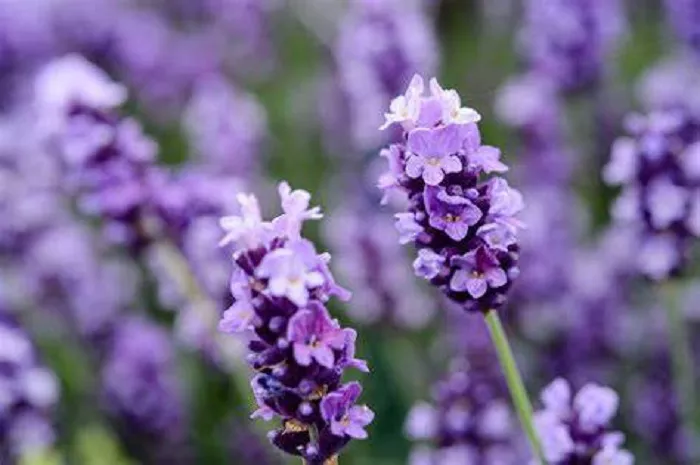Lavender, with its intoxicating fragrance and delicate purple hues, has long been a favorite among garden enthusiasts. The allure of its blossoms lies not only in their beauty but also in the duration of their bloom. Understanding how long lavender plants bloom can help gardeners plan their landscapes and enjoy the full splendor of these aromatic wonders. From the first buds to the final petals, the lavender bloom cycle is a captivating journey that combines nature’s rhythm with the gardener’s care.
The Lifecycle of Lavender Blooms
The Early Stages: Bud Formation and Anticipation
The story of lavender blooms begins with the formation of buds. In early spring, as the days grow longer and the soil warms, lavender plants start to awaken from their winter slumber. Tiny buds emerge along the stems, promising a future of vibrant color. This initial stage is crucial, as it sets the foundation for the blooming period. Gardeners can enhance bud development by providing well-drained soil and ample sunlight, ensuring that their lavender plants are off to a healthy start.
The First Blossoms: A Burst of Color
As summer approaches, the first lavender blooms begin to unfurl. Typically, this occurs around late May or early June, depending on the climate and variety. The sight of the first purple flowers is a joyous occasion, signaling the beginning of a beautiful season. These early blooms are often the most vibrant, drawing in bees and butterflies with their sweet nectar. To prolong the initial blooming phase, gardeners can deadhead spent flowers, encouraging the plant to produce more blooms.
The Peak Bloom Period: A Lavender Wonderland
The peak bloom period for lavender plants usually spans from mid-June to late July. During this time, the plants are in full glory, with stems covered in clusters of fragrant flowers. The air is filled with the distinctive scent of lavender, creating an almost magical atmosphere in the garden. This is the ideal time to harvest lavender for drying, as the essential oils are at their highest concentration. Regular pruning and proper watering can help maintain the health of the plants, ensuring that they continue to produce an abundance of blooms.
The Final Stages: Fading Beauty and Preparation for Next Year
As summer gives way to autumn, the lavender blooms begin to fade. By late August or early September, the flowers have mostly withered, leaving behind the green foliage. Although the blooming season is coming to an end, this is an important time for the plant’s overall health. Gardeners should focus on preparing the lavender for the upcoming winter. This includes cutting back the stems to promote new growth and adding a layer of mulch to protect the roots from freezing temperatures.
Factors Influencing Lavender Bloom Duration
Climate and Weather Conditions
The climate plays a significant role in determining how long lavender plants bloom. In regions with mild winters and warm, dry summers, lavender tends to have a longer blooming period. Conversely, areas with harsh winters and cool, damp summers may see a shorter bloom time. Gardeners in cooler climates can extend the blooming season by choosing cold-hardy varieties and providing protection from frost.
Soil and Nutrient Requirements
Lavender thrives in well-drained, alkaline soil. Poor soil conditions can lead to stunted growth and reduced blooming. To ensure optimal health, gardeners should amend the soil with organic matter and add a balanced fertilizer in early spring. Regular soil testing can help identify any nutrient deficiencies, allowing for timely adjustments.
Variety and Cultivation
Different lavender varieties have varying bloom durations. English lavender (Lavandula angustifolia) typically blooms for about six to eight weeks, while French lavender (Lavandula stoechas) may have a shorter bloom time but can produce multiple flushes of flowers throughout the season. Selecting the right variety for your garden’s conditions is essential for maximizing the blooming period.
Pruning and Maintenance
Proper pruning is key to maintaining healthy lavender plants and prolonging their bloom time. Regularly removing spent flowers and trimming back the stems can encourage new growth and prevent the plant from becoming too woody. Additionally, ensuring good air circulation around the plants helps prevent fungal diseases, which can negatively impact blooming.
Maximizing the Lavender Bloom Experience
Companion Planting
To create a visually stunning and fragrant garden, consider companion planting with lavender. Flowers such as roses, catmint, and yarrow share similar growing conditions and can enhance the overall beauty of the landscape. These companions also attract beneficial insects, promoting a healthy ecosystem in your garden.
Harvesting and Drying
For those who wish to preserve the beauty and fragrance of lavender, harvesting and drying the blooms is a rewarding activity. The best time to harvest is in the morning, when the essential oils are most concentrated. Bundle the stems together and hang them upside down in a cool, dry place. Once fully dried, the lavender can be used in potpourri, sachets, or even culinary creations.
Creating a Lavender Oasis
Transform your garden into a lavender oasis by planting in rows or clusters. This not only creates a stunning visual effect but also allows for efficient harvesting. Consider adding pathways and seating areas among the lavender plants, creating a peaceful retreat where you can fully enjoy the beauty and fragrance of the blooms.
Conclusion
The blooming period of lavender plants is a delightful journey that combines nature’s beauty with the gardener’s care. By understanding the lifecycle of lavender blooms and the factors that influence their duration, gardeners can create a vibrant and fragrant garden that thrives throughout the season. Whether you are a seasoned gardener or a novice, the enchanting allure of lavender blooms is sure to captivate and inspire.


